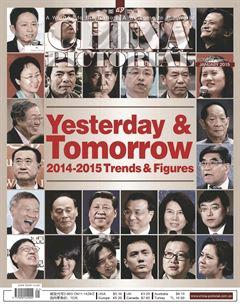Most Influential Translations of Chinese Literature of 2014
by+He+Mingxing
Over the last few years, the world has seen more than 700 pieces of Chinese literary work annually translated into foreign languages. More than 100 translations of Chinese literature were published overseas in 2014 according to an OCLC (Online Computer Library Center) index of publications in 470 languages collected by over 20,000 libraries in 112 countries and regions.
Here is a list of the “Most Influential Translations of Modern Chinese Literature in 2014.”
The list is well representative of the position of Chinese literature in the world. It contains masterpieces, both classical and modern, including Romance of the Three Kingdoms, poems by Li Shangyin of the Tang Dynasty (618-907), and Mirage, a novel from the Qing Dynasty (1644-1911), as well as popular fiction by contemporary writers, including Mo Yan, Mai Jia, Tie Ning, Yu Hua, and Can Xue, in addition to works by the younger generation, such as Guo Xiaolu, Sheng Keyi, and Liu Cixin, a young writer who has burst onto the science fiction scene.
These works fall into different genres including novels, poems, and books for children. Four are traditional literature and 16 contemporary.
In recent years, reading of both Chinese and foreign literatures has tended towards more integration. Literary schools have become more interactive, as evidenced by the list. Contemporary writers Mo Yan, Yu Hua, Mai Jia, Tie Ning, Can Xue, and Wang Xiaoni are all highly acclaimed domestically. Their works, particularly those tending towards popular American and European styles, have drawn constant attention from publishers overseas.
For instance, Decoded by Mai Jia, topping the list, is a mystery-thriller, a genre which has long been popular with readers in the West.
Greater numbers of books by writers born in the 1970s are being translated and published, and increasing in popularity overseas. After the publication of Fenfangs 37.2 Degrees by Guo Xiaolu, who received her MA from Beijing Film Academy and currently lives in Britain, I Am China, her latest work in 2014, was translated and published in Britain. Another 30-something writer is Sheng Keyi, whose six long novels and many novelettes have been published in English. Her novel Death Fugue reached Austra- lian bestseller list last year.
The 2010 first Chinese edition of The Three-Body Problem, a sci-fi series by Liu Cixin, a Chinese electronics engineer, created quite a stir and was quickly translated into English and published in the United States. Within one month, 214 copies were acquired by libraries, many more than expected. The New York Times raved about the book, calling it fit for any reader curious about contact with alien life.
In the new millennium, some foreign publishers have arrived in China, looking for gold in the market of Chinese literature, especially from promising young writers, who are writing about universal subjects with a high ceiling and elevating Chinas contemporary literature. These include two multinational publishers– Pantheon Books, which contributed two books on the above list, and Farrar, Straus and Giroux, which published Decoded by Mai Jia, a global bestseller. Their efforts will only help spread contemporary Chinese literature worldwide and open a wider window for foreigners to better understand China through books.

